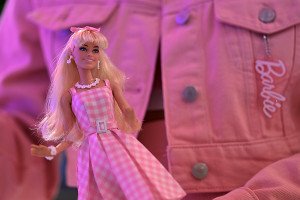Four Things You Didn’t Know About Moby-Dick

Moby Dick final chase photo via Wikimedia Commons
The sinking of the Essex piqued Herman Melville’s interest almost 200 years ago, and more recently, the interest of Warner Bros. Pictures. A new film, In the Heart of the Sea, is based off of a book chronicling the true story of the Nantucket ship that succumbed to the force of a sperm whale in the South Pacific in 1820.
The story of the vessel (which departed from New Bedford) inspired Melville’s Moby-Dick, the classic story of Ahab’s hunt for the white whale. If you’re headed to theaters to catch Chris Hemsworth’s performance when In the Heart of the Sea premieres on Dec. 11, impress your friends with a bit of Moby-Dick trivia.
- Herman Melville hadn’t even been to Nantucket before writing Moby-Dick.
He wrote the book based off of what he had read about the Essex, and from research he’d done on Nantucket’s whaling history. The Nantucket Historical Association points out a description of Nantucket from the novel:
“Nantucket! Take out your map and look at it. See what a real corner of the world it occupies; how it stands there, away off shore, more lonely than the Eddystone lighthouse. Look at it—a mere hillock, and elbow of sand; all beach, without a background.”
A little vague, no?
- But he did go eventually–after the book was published.
Moby-Dick was released in 1851, and Melville finally got around to visiting Nantucket in July of 1852. He spent a few days on the island, and had the chance to meet Captain Pollard, the captain of the Essex and a survivor of the wreck. Melville wrote, “To the islanders he was a nobody—to me, the most impressive man, tho’ wholly unassuming, even humble—that I ever encountered.”
- Melville dedicated the book to his buddy, Nathaniel Hawthorne.
While the two esteemed authors had about a 15 year difference in age, they had a few things in common. Melville and Hawthorne lived in Boston for a time, and they became acquaintances while both were spending time writing in the Berkshires. Their friendship lasted only a few years, but they continued to read and annotate each other’s work.
- Captain Ahab’s first mate was sort of the inspiration for a Seattle-based coffee company.
Starbucks founder Gordon Bowker considered the name “Pequod” after the whaler ship in Moby-Dick of the same name, but instead went with the name of Ahab’s first mate, Starbuck. He explained the reasoning behind his company’s name to the Seattle Times:
Somebody somehow came up with an old mining map of the Cascades and Mount Rainier, and there was an old mining town called Starbo. As soon as I saw Starbo, I, of course, jumped to Melville’s first mate [named Starbuck] in Moby-Dick. But Moby-Dick didn’t have anything to do with Starbucks directly; it was only coincidental that the sound seemed to make sense.


